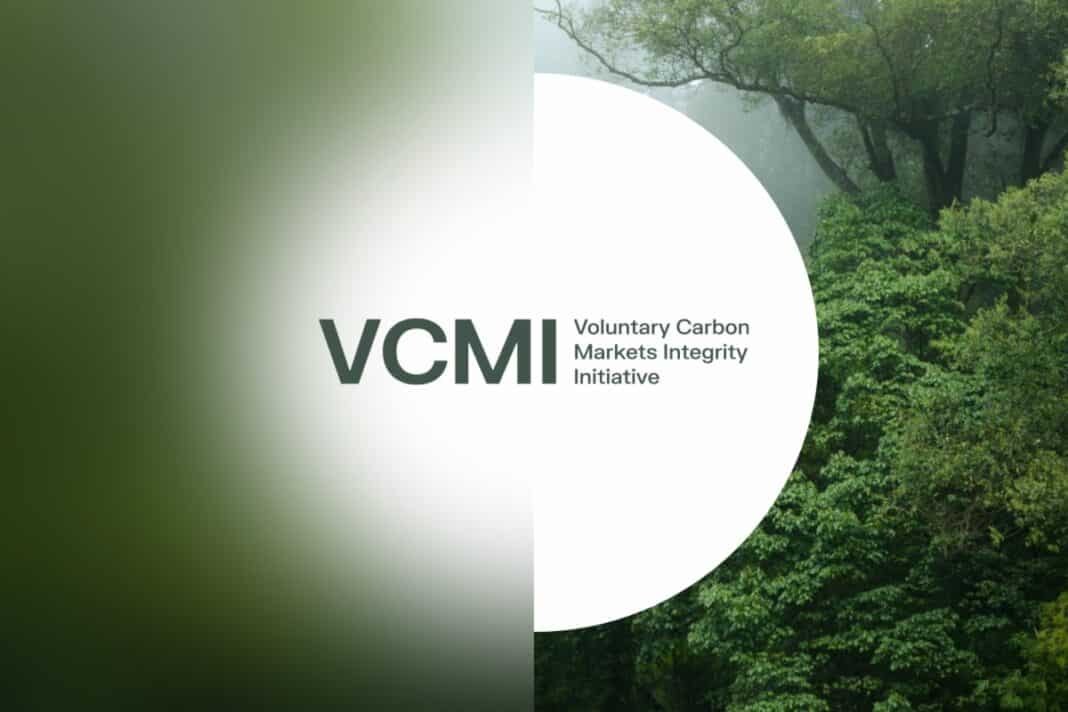Voluntary Carbon Markets Integrity Initiative (VCMI) launched a draft code called Claims Code of Practice for using carbon credits, supported by the UK government.
The Claims Code aimed at standardizing definitions and reducing greenwashing in the VCM.
The code also seeks to help investors prove whether claims made by companies using carbon offsets are credible. It aims to bring transparency to an unregulated market.
Voluntary carbon credits enable companies to fund various projects to offset their emissions. For instance, nature-based solutions like forest preservation/restoration, renewable energy projects, or carbon capture and storage are commonly available.
Industry reports suggest that the VCM hit a record high of over $1 billion in 2021 and is on track to reach $50 billion in 2030.
Many believe that the use of offsets is necessary for companies to neutralize their hard-to-abate emissions. This is particularly crucial for carbon-intensive industries.
But there have been serious concerns about transparency and oversight in the VCM. And so, the code comes in to address these concerns.
The VCMI’s Claims Code for Carbon Credits
Many large companies such as Shell, Apple, Microsoft, Stellantis, Disney, and more have set net zero emission targets. They all said that they need to buy or generate carbon credits to offset residual GHG.
But some climate activists are questioning carbon offsets, saying they lack actions to achieve actual emissions cuts.
Hence, the VCMI developed a provisional Claims Code of Practice (or Claims Code) on credible use of carbon credits by companies and other market players.
“Companies should follow the accepted mitigation hierarchy, which is to say they should reduce or remove all the emissions they possibly can within their value chains… Only once they’ve exhausted the possibilities to reduce those emissions, can they turn to the use of carbon credits to cover any remaining emissions…”
VCMI set three tiers for corporate offset claims: Gold, Silver, and Bronze.
VCMI Gold
This is the most ambitious category of ranking for a company to chase. Under this rank, companies must be on track to achieve their interim net zero targets for Scopes 1, 2, and 3 via emissions reductions within their value chain.
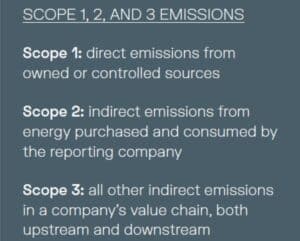
Companies also have to cover all (100%) remaining unabated emissions through the purchase and retirement of high-quality carbon credits.
Here’s an example of how a company can achieve VCMI Gold status.
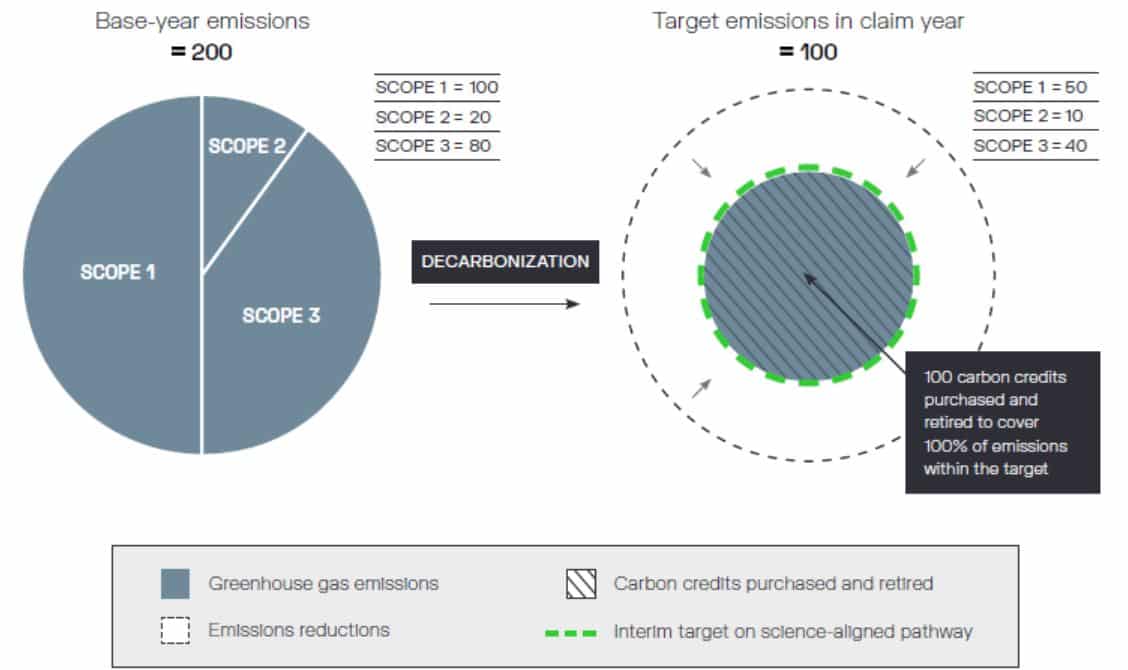
VCMI Silver
Hitting this ranking means companies are on track to meeting their interim targets for Scopes 1, 2, and 3. They must also have offset at least 20% of their residual emissions by using carbon credits.
Here’s how a company can achieve VCMI Silver rank.
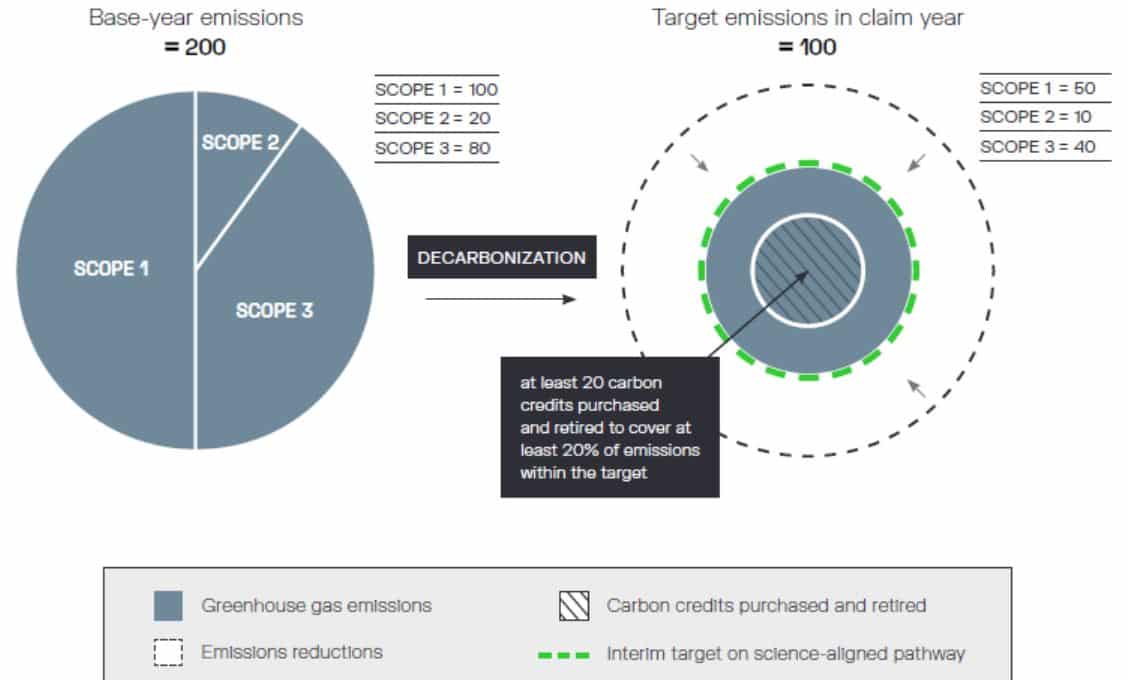
VCMI Bronze
Under this VCMI’s code ranking, companies must be on track to meeting their Scopes 1 and 2 emissions. They also need to offset up to 50% of their Scope 3 emissions required by their net zero interim targets.
VCMI Bronze companies also have to offset at least 20% of their remaining emissions. The carbon credits they bought will be retired in 2030 when they can now become VCMI Silver.
The diagram below shows how this ranking works.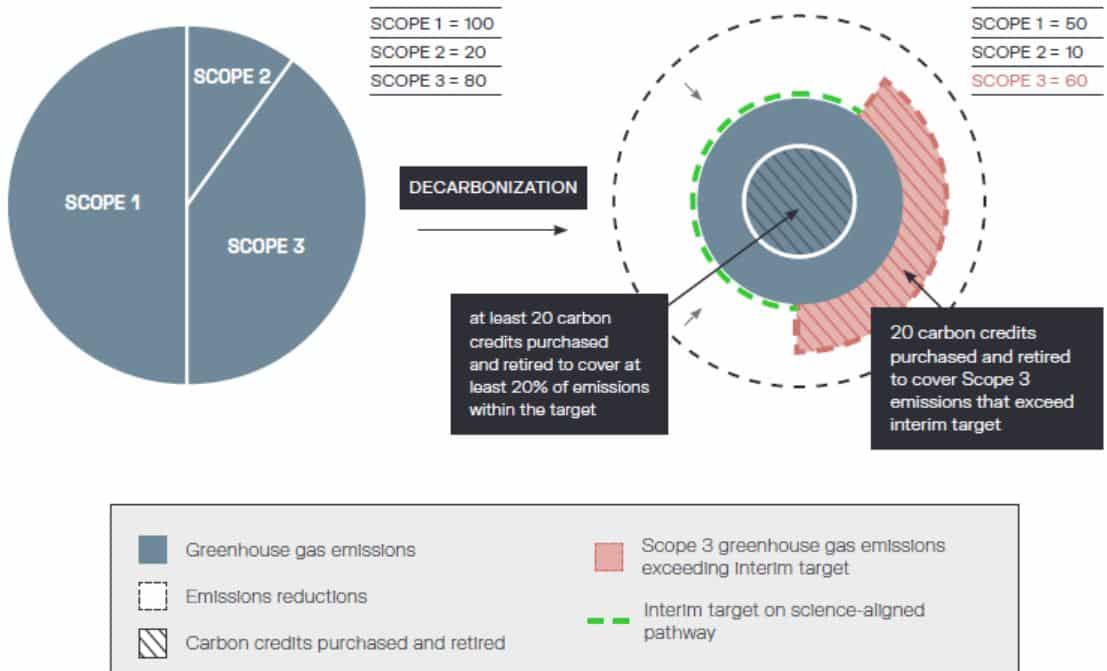
VCMI Code Four Components/Steps
VCMI’s Code for using carbon credits in making claims is made up of four steps. Companies must adhere to all four components to make credible claims about their voluntary use of carbon credits.
Step #1. Meeting the prerequisites
The VCMI code requires that companies only use carbon credits in addition to (not as a substitute for) science-aligned decarbonization across value chains. The VCMI Prerequisites are in place to ensure that this is the case.
At this first step, firms must do the following before they can make any voluntary use of carbon credits to offset emissions.
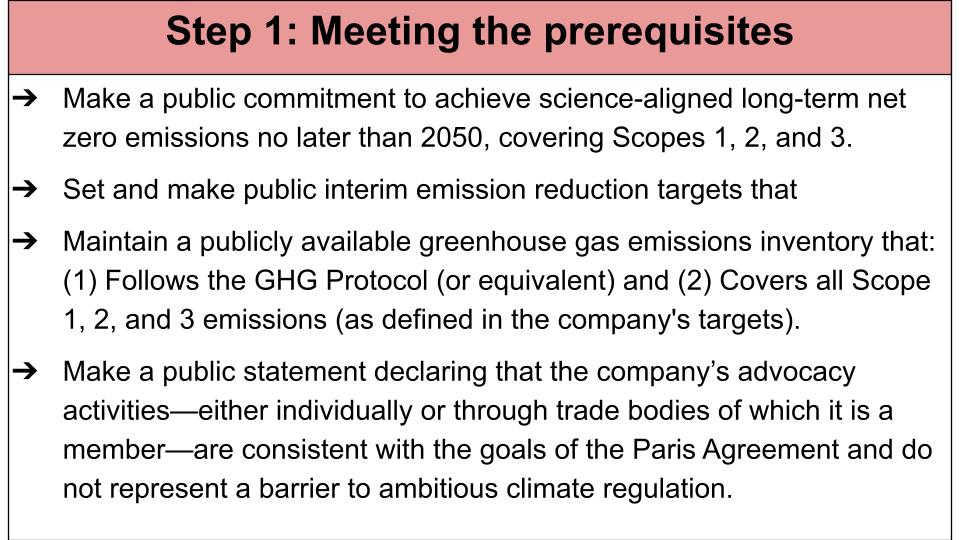
Step #2. Identifying claims to make
VCMI Claims Code involves two different types of claims for recognizing achievements before companies meet their long-term net zero commitment. These are:
Enterprise-Wide Claims: representing achievement at the enterprise level as companies progress toward their net zero pledges.
Brand-, Product-, and Service-Level Claims: representing achievement across the full value chain of a specific brand (line of products or services), product, or service.
The claims are organized as a progression, following the widely accepted mitigation hierarchy. Priority must be given to decarbonization within company value chains over the use of carbon credits to cover excess emissions.
- VCMI Gold is the highest-level claim.
Step #3. Purchasing high-quality carbon credits
All credits used as the basis for credible claims must be high quality and meet basic criteria. To meet the basic criteria for high-quality credits to any claim, the credits must be:
- Associated with a recognized and credibly governed standard-setting body
- High environmental quality
- From activities that, where relevant, are compatible with human rights
- From activities that, where relevant, promote equity, apply social safeguards, and demonstrate positive socioeconomic impacts,
- From activities that, where relevant, contribute to the protection and enhancement of environmental quality
Overall, carbon credit purchases and the activities they support should result in positive outcomes for local communities and adhere to social safeguards.
Step #4. Reporting transparently on the use of carbon credits
To substantiate a claim, transparent reporting of the following information is vital:
- Number of credits purchased and retired to make a claim; proportion used to cover emissions beyond a company’s targets; and proportion used to cover Scope 3 emissions in order to meet the target (for VCMI Bronze claim)
- Certification standard name, project name, ID, and issuing registry for each credit used
- Host country
- Credit vintage
- Methodology/project type
Beta Testing of VCMI’s Code for Carbon Credits
A VCMI spokesperson suggests that investors can use the code to “scrutinize and benchmark claims made by the companies”.
VCMI is now seeking companies to beta test the code. Unilever, Google, and Hitachi are the first companies that commit to pilot the code.
Stakeholders can provide feedback about the code by 12 August. The final version of the carbon credits use standard for ranking companies in meeting climate goals is due in early 2023.

